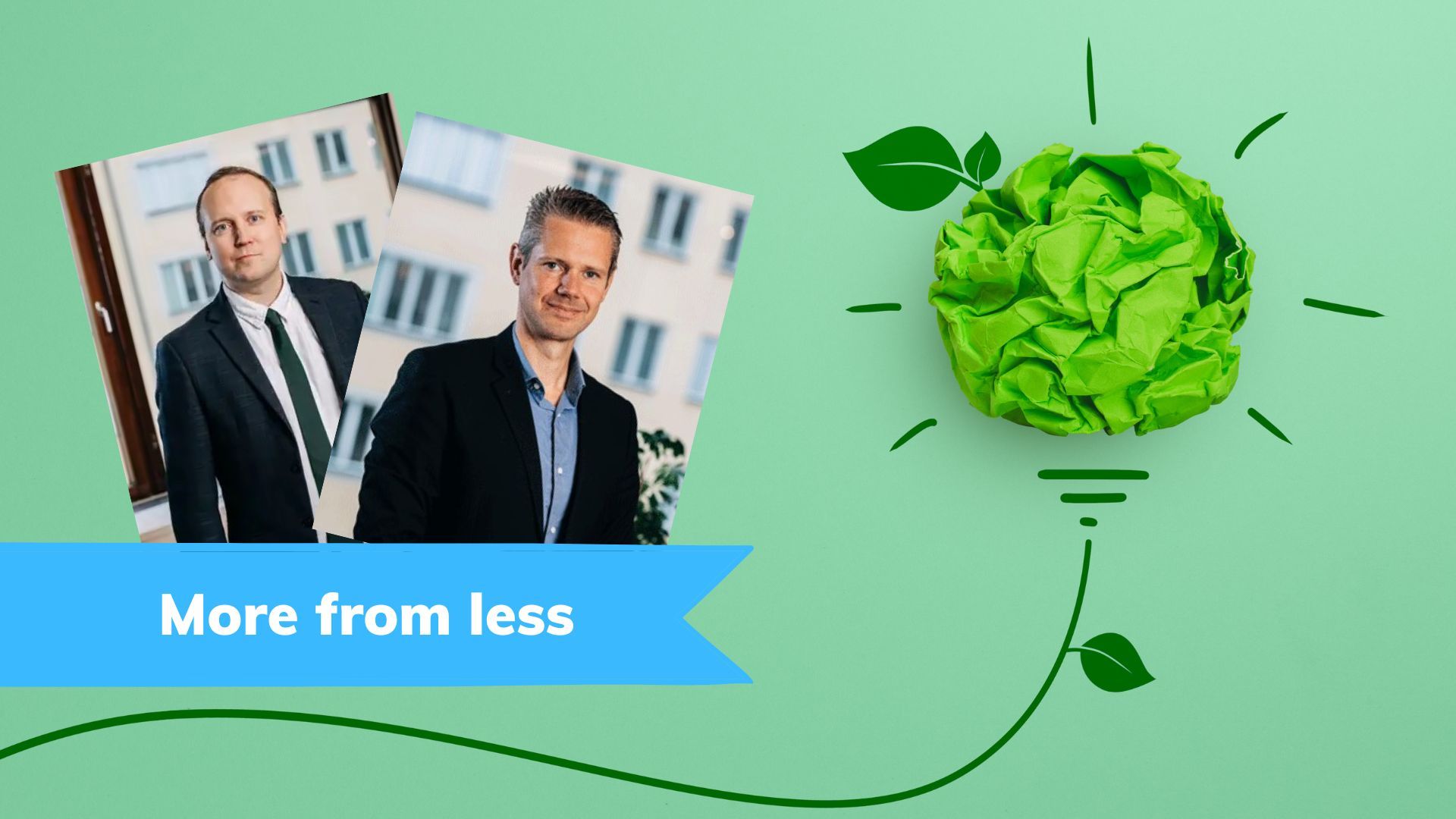
📉 Sweden gets more from less
PART 1: Lower carbon dioxide emissions and less pollution despite more inhabitants and economic growth. Sweden gets more from less, writes Jonas Grafström and Christian Sandström.
Share this story!
Too few positive books and newspaper articles are written about the state of the world. Apart from a few clearly shining stars like Steven Pinker and the late Hans Rosling, there have been more doomsday prophets than optimists.
MIT researcher Andrew McAfee is something as unusual as an environmental optimist. His book More from Less: The Surprising Story of How We Learned to Prosper Using Fewer Resources―and What Happens Next has had a great impact in recent years. Like all good books, it raises questions. McAfee showed that of the sixty natural resources he surveyed in the United States, virtually all had been used less over time. McAfee's book made us ask what it looks like in Sweden.
The advantage of being a researcher is that you can sometimes take the time to answer questions you are thinking about. The result was the book More for less?: growth and sustainability in Sweden (can be downloaded for free here). The development in Sweden between 1990 and 2018 was studied. During the forty speaking occasions we had presenting the book, no one come close to guessing that Sweden's environment has developed as well as it has. Ignorance was very widespread regardless of whether it was Swedish or foreign graduates and students. In this review article, we review some of the most important findings.

Carbon dioxide
In the world, emissions have increased in recent years, but in Sweden, the development looks different. Here increased growth is combined with environmental progress. Between 1990 and 2018, which the book studies, the Swedish economy grew by 90 percent, the population by 1.6 million, and carbon dioxide emissions decreased by 27 percent. During the period when the economy grew by 90 percent, we used 0.07 percent more electricity, electricity that was produced in a greener way.
What are the reasons for this reduction? Technological development has been a key component. Total emissions from cars have decreased by 21 percent since 1990, even though the number of cars increased by 1.2 million. The energy efficiency of the vehicle fleet has progressed rapidly as older vehicles have been replaced by new, more fuel-efficient ones. Vehicles that leave the fleet (scrapped) also contribute to a reduction in emissions. Carbon dioxide emissions from the passenger car fleet as a whole (old and new) fell from 149 g/km (6.0 l/100 km) in 2018 to 146 g/km (5.9 l/100 km) in 2019. New cars use far less than average and you will get up to 70 miles further on an equivalent tank compared to grandpa's giant Toyota from the early 2000s.

This kind of development is thus far from unique to Sweden. In a majority of EU countries, emissions have decreased while the level of prosperity has increased. Carbon dioxide emissions fell by a total of 25 percent between 1990 and 2019, while the economy grew by 63 percent during the same period. In some countries, GDP has grown by over 100 percent, while emissions have been halved. This is particularly interesting as 80 percent of our imports come from these countries and the total imports from all of Asia are equivalent to 10 percent.
Pollution
Air pollution in Sweden has decreased significantly. Since 1990, falls of up to 80 percent are seen in several categories. 24 out of 26 air pollutants for which the Environmental Protection Agency publishes data decreased in absolute terms since 1990. The largest percentage decrease occurred in emissions of lead, which fell by 95 percent, but sulfur dioxide has also shown a sharp decrease of 80 percent since 1990. On average, the decrease has been 52 percent. As GDP has increased by 85 percent during the same time period, the decline in relation to GDP is significant and shows that we in Sweden managed to combine a rapidly growing economy with improved air.
In several emission categories, there have been sharp declines in emissions, for example, emissions of lead to air decreased by 97 percent due to technological development in the automotive industry enabling a switch to cleaner alternatives, which politics also pushed for. The reduction in emissions of carbon monoxide, volatile organic compounds, and nitrogen oxides over the past 30 years comes from the transport sector. There, catalytic exhaust gas purification is the most important explanation.
Fallout of sulfur oxide leads to acidification of soil and water. Strong acidification affects animals and plants on land, but mainly in lakes and waterways. Emissions of sulfur dioxide have decreased by 80 percent since 1990. The decrease in the use of coal and fuel oil appears to be the main reason for the decrease. The nitrogen oxide tax and the sulfur tax are considered to have contributed to innovation and more energy-efficient production processes, which enabled emission reductions at low costs.
Exposure to particles is associated with respiratory problems and other respiratory symptoms, but also heart and lung diseases. Total emissions of fine particles decreased by 59 percent between 1990 and 2018. Industrial processes for the manufacture of paper and pulp, stricter emission requirements, and the introduction of environmental classes for vehicles are considered to be central factors for the decline in emissions.


Hope also for other countries
The major point in our book is that if Sweden can improve, there is hope and possibility for other countries to improve. There is no reason to break down even though it looks dark globally, instead, we should bring forth the technology of tomorrow.
As McAfee found for the USA, there is positive news for environmental development in Sweden, where, for example, there have been impressive reductions in the emissions of environmental toxins over the past 25 years. It appears that a combination of environmental legislation and technological advances has improved the environment while we have simultaneously experienced economic growth. Change is not only possible but has also happened, which is important to note.
Because in order to live up to the Paris Agreement, global greenhouse gas emissions must decrease. Although global emissions have not decreased, greenhouse gas emissions from developed economies such as the EU and the US have fallen despite continued economic growth. This is thanks to the fact that technological developments in many economies have contributed to a sharp decline in the prices of renewable energy technology, which has improved the economic conditions for rapidly reducing carbon dioxide emissions.
Jonas Grafström, researcher and vice president at Ratio
Christian Sandström, professor at Ratio and Jönköping
The basis and figures are available in the book Mer för mindre? – tillväxt och hållbarhet i Sverige. Read more about the book here (Swedish).

By becoming a premium supporter, you help in the creation and sharing of fact-based optimistic news all over the world.



